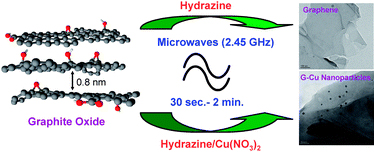Biomedical, Engineering and physical science
Methods for the Production of for C-C Cross-Coupling Reactions Supported on Graphene
The technology
Researchers at VCU have developed a simple and consistent method for the production of graphene and metal nanoparticle catalysts supported on graphene for cross-coupling reactions. This has the ability to use either microwave or laser irradiation to synthesize graphene from solid graphite oxide, producing a high yield of uniform, highly stable catalysts, which can be easily removed and recycled (10x more than traditional methods). Additionally, the laser photo-thermal process eliminates the need for chemical reducing agents, thereby offering a dramatically simplified method. These methods allow for a consistent method for producing high-quality graphene as well as increased control of the structure of the graphene to help drive reactivity of the catalyst.
Graphene’s unique hexagonal atomic layer structure, high electron mobility at room temperature, thermal, chemical and mechanical stability, as well as its high surface area make it the optimal material to support nanoparticle particle production. Additionally, graphene support has been shown to provide significant advantages in the area of carbon-carbon cross-coupling reactions. VCU researchers have further synthesized new catalysts using these methods, including palladium nanoparticles through palladium-catalyzed cross-coupling reactions. These methods and catalysts offer a number of advantages over well-known commercial options and show great promise for further enhancements in this field.

